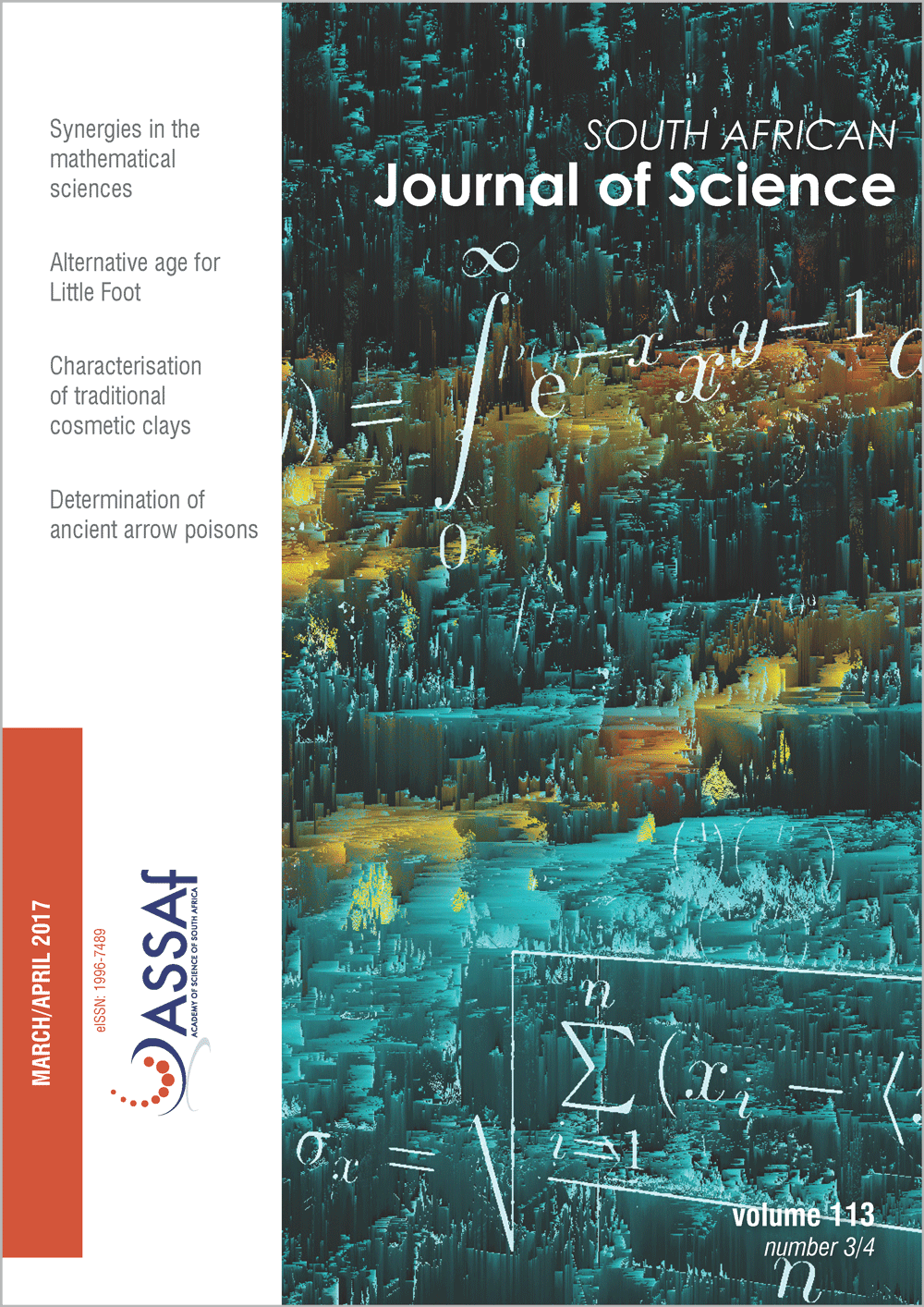The enduring and spatial nature of the enterprise richness of South African towns
DOI:
https://doi.org/10.17159/sajs.2017/20160190Keywords:
entrepreneurial spaces, enterprise dynamics, enterprise ecology, regional economics, business evolutionAbstract
Enterprise richness (measured by the number of enterprise types) showed a statistically significant log-log relationship (or power law) with the total number of enterprises in (1) towns in different regions of South Africa and (2) towns in the same region but seven decades apart. Entrepreneurial space in towns develops or disappears in a regular way as towns grow or regress, which is further proof of orderliness in the enterprise dynamics of South African towns. The power laws are very similar to one another, which was powerfully illustrated by the fact that one relationship extracted from seven-decade-old information could accurately predict the enterprise richness of modern towns in South Africa. The enterprise richness power law of towns in South Africa extends over space and time. Recent reviews of research on small towns and local economic development in South Africa have ignored the orderliness detected in their enterprise structures. Islands have provided laboratories for the study of natural evolution and the MacArthur–Wilson Species Equilibrium Model based on island biogeography was a main contributor to progress in ecology. Research on regional economic geography in South Africa should move beyond the merely descriptive/narrative to more quantified research. In considering the lack of employment and poverty in South Africa, the National Development Plan suggests that towns and rural areas are important cogs in efforts to overcome these problems. Development plans that are out of sync with the observed regularities are perhaps bound to fail.
Significance:- Prediction of enterprise composition and dynamics in South African towns.
Published
Issue
Section
License

All articles are published under a Creative Commons Attribution 4.0 International Licence
Copyright is retained by the authors. Readers are welcome to reproduce, share and adapt the content without permission provided the source is attributed.
Disclaimer: The publisher and editors accept no responsibility for statements made by the authors
How to Cite
- Abstract 657
- PDF 494
- EPUB 236
- XML 250













.png)